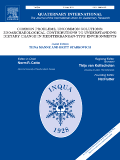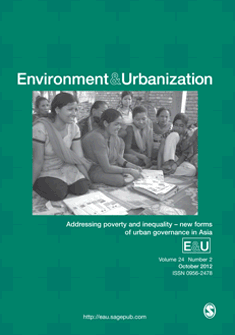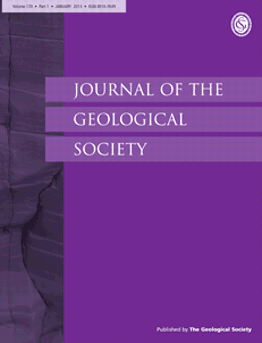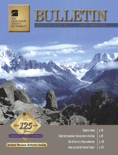
TRIA-Territorio della Ricerca su Insediamenti e Ambiente
Scope & Guideline
Innovating Urban Planning for a Sustainable Future
Introduction
Aims and Scopes
- Environmental Dynamics and Climate Change:
Research on how climate factors influence environmental processes, such as sediment transport, vegetation growth, and ecosystem responses, with a focus on different geographical regions. - Chronological Dating Techniques:
Utilization of various dating methods, including radiocarbon dating, luminescence dating, and electron spin resonance, to establish timelines for geological and archaeological events. - Sedimentology and Geochronology:
In-depth studies of sedimentary processes and deposits, aiming to understand historical changes in landscapes and environments across different periods. - Human-Environment Interactions:
Exploration of the impact of human activities on natural landscapes, including urbanization, agriculture, and resource extraction, and their historical implications. - Case Studies and Regional Analyses:
Detailed examination of specific geographical areas to provide insights into local environmental history and management, often through multidisciplinary approaches.
Trending and Emerging
- Climate Impact Studies:
Increasing research into the effects of climate change on local ecosystems, particularly in the context of urban environments and natural landscapes. This trend reflects the urgent need to understand and mitigate climate impacts. - Advanced Dating Techniques:
A notable rise in studies utilizing innovative dating methods, such as optically stimulated luminescence (OSL) and electron spin resonance (ESR), showcasing a trend towards precision in chronological studies. - Drought and Water Use Efficiency in Flora:
Emerging interest in the sensitivity of plant species to drought conditions, which is increasingly relevant in the context of global climate change and its effects on biodiversity. - Interdisciplinary Research Approaches:
Growing emphasis on integrated studies that combine environmental science, archaeology, and historical analysis, indicating a shift towards holistic understanding of human-environment interactions. - Sedimentary Processes in Urban Contexts:
An increase in research focusing on how urbanization affects sedimentary processes and landscapes, highlighting the importance of understanding urban environmental dynamics.
Declining or Waning
- Traditional Archaeological Methods:
There has been a noticeable decline in publications focusing solely on conventional archaeological methodologies without an interdisciplinary approach, as the journal increasingly emphasizes the integration of environmental sciences. - Purely Geological Studies:
Studies that focus exclusively on geological formations without linking to environmental or chronological contexts are appearing less frequently, suggesting a trend towards more integrated research. - Historical Climate Records:
Research centered on historical climate data without direct implications for current environmental conditions or human impacts is waning, as the journal prioritizes contemporary relevance. - Static Models of Ecosystems:
There is a declining interest in static ecological models that do not account for dynamic changes over time, reflecting a shift towards more holistic, temporal analyses of ecosystems.
Similar Journals

QUATERNARY INTERNATIONAL
Exploring Earth's Transformative Past.Quaternary International is a prestigious journal published by Pergamon-Elsevier Science Ltd, focusing on the interdisciplinary study of the Quaternary Period, which encompasses significant geological, hydrological, and climatic changes. With an ISSN of 1040-6182 and E-ISSN 1873-4553, it stands as a critical resource in the realm of Earth-Surface Processes, achieving a strong position within the academic community, evidenced by its 2023 Scopus rank of #32 out of 179 in this category, corresponding to an impressive 82nd percentile. Since its inception in 1989, this journal has provided valuable insights and contributed to the advancement of knowledge in the Earth and Planetary Sciences. Researchers, professionals, and students alike will find a wealth of original research articles, reviews, and case studies that inform and inspire further studies in the Quaternary sciences. Although the journal does not currently offer open access options, its reputation for rigorous peer review and impactful content underscores its significance in shaping scholarly discourse in the field.

City and Environment Interactions
Innovating the Future of Cities and Their EnvironmentsCity and Environment Interactions, published by Elsevier, stands at the forefront of interdisciplinary research in urban studies and environmental science. As an Open Access journal since 2019, it facilitates the unrestricted dissemination of knowledge, catering to a global audience of researchers, professionals, and students interested in the dynamic interplay between urban environments and ecological systems. With a strong focus on innovative management, monitoring, policy, and law, the journal proudly holds Q1 rankings across multiple categories including Environmental Science, Geography, Planning and Development, and Urban Studies, reflecting its significant impact and relevance in the field. The journal's commitment to addressing pressing urban and environmental challenges positions it as a vital resource for advancing scholarship and practice in sustainable urban development. For more information, visit the journal's page on the Elsevier website.

ENVIRONMENT AND URBANIZATION
Advancing sustainable solutions for urban ecosystems.Environment and Urbanization is a leading interdisciplinary journal published by SAGE Publications Ltd, dedicated to advancing knowledge in the fields of Environmental Science and Urban Studies. With a strong focus on the interactions between urban environments and ecological systems, this journal has established itself as a pivotal resource for researchers, professionals, and students interested in sustainable urban development and environmental management. Since its inception in 1989, Environment and Urbanization has continually provided high-quality, peer-reviewed articles that foster a deeper understanding of contemporary urban challenges, making it a highly cited publication with an impressive impact factor. As evidenced by its Q1 ranking in both Environmental Science (miscellaneous) and Urban Studies for 2023, the journal stands at the forefront of research, boasting notable Scopus rankings in its fields. By remaining committed to publishing cutting-edge research, the journal aims to influence policy and practice across the globe, ultimately aiding in the creation of more resilient and livable urban areas.

Geochronometria
Connecting Researchers with Geological InsightsGeochronometria is a renowned journal dedicated to the field of Earth and Planetary Sciences, published by SCIENDO in Germany. With a history spanning over two decades since its inception in 2000, it has established itself as a key platform for disseminating innovative research and methodologies in geochronology, radiometric dating, and related disciplines. Currently, it holds a respectable Q2 ranking in the subject area, showcasing its relevance and influence, particularly with a Scopus rank of #92 out of 159 journals in Earth and Planetary Sciences, which places it in the 42nd percentile. This journal is committed to facilitating open discussions and advances in understanding geological time scales and processes, making it an essential resource for researchers, professionals, and students alike. Although it is not an open-access journal, its significant contributions to the scientific community underscore its pivotal role in advancing knowledge within the field.

JOURNAL OF THE GEOLOGICAL SOCIETY
Connecting Scholars to the Heart of GeologyJOURNAL OF THE GEOLOGICAL SOCIETY, published by GEOLOGICAL SOC PUBL HOUSE, is a premier academic journal dedicated to advancing the field of geology. With a rich history dating back to 1845 and continuously published until 2024, this journal caters to a diverse audience of researchers, professionals, and students involved in earth sciences. The journal is recognized for its high impact factor, situating it in the top Q1 category in the field of geology, as indicated by its impressive Scopus rank of #49 out of 321, positioning it at the 84th percentile in Earth and Planetary Sciences. This esteemed scholarly platform promotes rigorous peer-reviewed research, ensuring that novel findings contribute to the global geological discourse. Although it operates under a subscription model, the journal's archive offers valuable insights for anyone pursuing excellence in geological research. The JOURNAL OF THE GEOLOGICAL SOCIETY stands as a vital resource for disseminating scientific knowledge and fostering educational growth within the field.

Cuaternario y Geomorfologia
Bridging Disciplines for a Deeper Earth UnderstandingCuaternario y Geomorfologia is a distinguished journal published by the Spanish Quaternary Research Association, focusing on the interdisciplinary study of Quaternary research, geomorphology, and related fields. With its ISSN 0214-1744 and a publication history spanning from 2012 to 2024, the journal serves as a critical platform for researchers and practitioners in geography, geology, and paleontology. Although its current Scopus rankings place it in the lower quartiles across various categories, being Q4 in Earth-Surface Processes, Geography, Planning and Development, Geology, and Paleontology, Cuaternario y Geomorfologia continues to push boundaries within its sphere, aiming to foster a deeper understanding of Earth sciences. Situated in Madrid, Spain, the journal's commitment to sharing groundbreaking research without access barriers enhances its value for academics, offering insights that drive forward the fields of Quaternary studies and beyond. Researchers, professionals, and students alike will find a rich repository of knowledge within its pages, making it an essential resource for current and aspiring experts in the discipline.

INTERNATIONAL JOURNAL OF EARTH SCIENCES
Championing Open Access for Groundbreaking DiscoveriesINTERNATIONAL JOURNAL OF EARTH SCIENCES, published by Springer, is a leading journal in the field of Earth and Planetary Sciences, distinguished by its Q1 quartile ranking in the 2023 category of Earth and Planetary Sciences (miscellaneous). With an ISSN of 1437-3254 and an E-ISSN of 1437-3262, this journal has been a pivotal platform for researchers, academics, and practitioners since its inception in 1996. The journal's focus encompasses a broad range of topics within Earth sciences, making it a vital resource for contributions that enhance our understanding of geological processes, climate change, and planetary dynamics. The impact factor reflects its high standards and the significance of the research it publishes, ranking it in the 74th percentile among its peers as per Scopus. Furthermore, the journal offers Open Access options, facilitating the global dissemination of groundbreaking research. The editorial team is committed to advancing knowledge in Earth sciences, serving as an essential reference for students and professionals looking to engage deeply with this dynamic field.

Desenvolvimento e Meio Ambiente
Innovating research to protect our environment.Desenvolvimento e Meio Ambiente is a pioneering open-access journal published by Universidade Federal do Paraná, Editora, committed to advancing knowledge in the fields of Environmental Science and Geography. Established in 2000, this Brazilian journal serves as a vital platform for researchers, professionals, and students to share interdisciplinary studies that address the pressing environmental challenges faced in both local and global contexts. With an E-ISSN of 2176-9109, this journal is particularly significant given its current quartile rankings of Q4 in Environmental Science (miscellaneous) and Geography, Planning, and Development in 2023. Although it has a modest impact factor reflected by its Scopus ranks—691/821 and 206/233 within their respective categories—the journal is dedicated to elevating the discourse surrounding sustainable development practices. With a convergence period extending from 2018 to 2024, Desenvolvimento e Meio Ambiente is an essential resource for anyone invested in the intersection of environmental studies and social sciences, fostering a community of inquiry and collaboration amidst Brazil's unique ecological landscape.

Estudios del Habitat
Transforming Spaces through Critical AnalysisEstudios del Habitat is a distinguished academic journal published by Universidad Nacional de La Plata, Facultad de Arquitectura y Urbanismo, dedicated to the exploration of habitat studies, urban planning, and architectural theory. With a commitment to advancing knowledge in the fields of architecture and urbanism, this journal serves as a vital resource for researchers, professionals, and students alike. Although it does not operate under an open access model, the journal seeks to disseminate high-quality research that addresses contemporary challenges in habitat design and urban sustainability. By featuring innovative case studies, critical analyses, and interdisciplinary approaches, Estudios del Habitat facilitates a deeper understanding of the relationship between built environments and their inhabitants, making significant contributions to academic scholarship and practical applications in architecture and urban studies. Don't miss the opportunity to engage with cutting-edge research from Latin America and beyond, where the complexities of spatial dynamics are examined and discussed rigorously.

GEOLOGICAL SOCIETY OF AMERICA BULLETIN
Uncovering Geological Truths, One Bulletin at a TimeThe Geological Society of America Bulletin (GSA Bulletin), with ISSN 0016-7606 and E-ISSN 1943-2674, is a premier scholarly journal published by Geological Society of America, Inc. Based in the United States, this journal has been a cornerstone of geological research since its inception in 1890, making significant contributions to the understanding of Earth sciences over more than a century. Recognized for its rigorous peer-review process, the GSA Bulletin currently holds a prestigious Q1 ranking in Geology, positioning it among the top 14 journals in Earth and Planetary Sciences in terms of Scopus ranking, reflecting the high quality and impact of the research it publishes. Researchers, professionals, and students alike benefit from its comprehensive coverage of geological topics, including sedimentology, volcanology, and paleontology, which supports the advancement of knowledge in the geosciences. While the journal is not open access, it continues to provide a vital platform for innovative research and critical discussions that shape the future of geology.